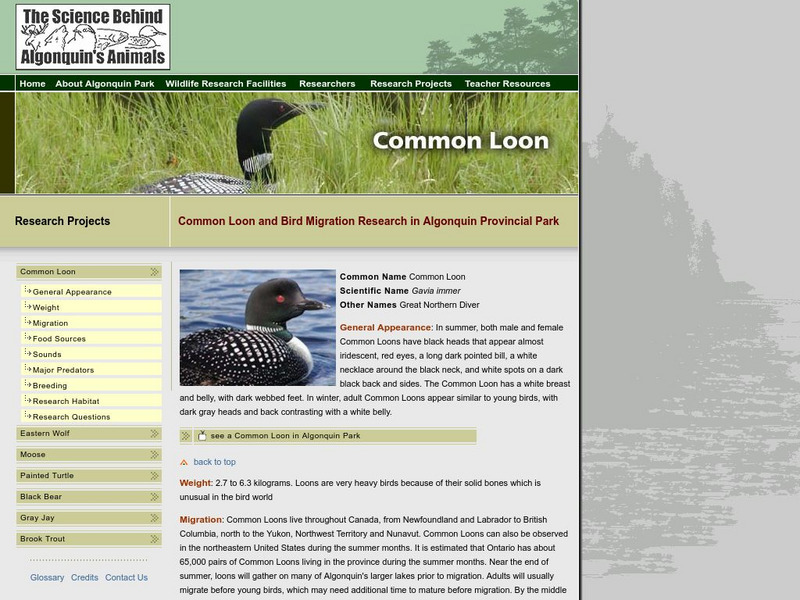Hi, what do you want to do?
Curated OER
Night Hike
Students explore Upham Woods at night and investigate about the special adaptations of nocturnal animals. They identify three nocturnal animals and how they are adapted to the night. Students explain what night vision is and how it works.
Curated OER
Water 1: Water and Ice
Students investigate water in its solid and liquid form. In this states of matter lesson, students experiment to see what happens as water goes from a solid, ice, to a liquid, water, and back again. They write about and illustrate the...
Friends of Algonquin Park
Common Loon and Bird Migration Research in Algonquin Provincial Park
General information is given on the loon. See a movie of a Common Loon and listen to the different sounds that the loons are best known for. Included are research questions and answers about impact of the environment on the loon in the...
Curated OER
Wikipedia: Canada Goose
This encyclopedia article from Wikipedia defines and describes the Canada goose. Content includes a look at this bird's characteristics, behavior, food, migration pattern, reproduction, and environmental status.
Curated OER
Wikipedia: Canada Goose
This encyclopedia article from Wikipedia defines and describes the Canada goose. Content includes a look at this bird's characteristics, behavior, food, migration pattern, reproduction, and environmental status.
Curated OER
Wikipedia: Canada Goose
This encyclopedia article from Wikipedia defines and describes the Canada goose. Content includes a look at this bird's characteristics, behavior, food, migration pattern, reproduction, and environmental status.
Curated OER
Wikipedia: Canada Goose
This encyclopedia article from Wikipedia defines and describes the Canada goose. Content includes a look at this bird's characteristics, behavior, food, migration pattern, reproduction, and environmental status.
Curated OER
Wikipedia: Canada Goose
This encyclopedia article from Wikipedia defines and describes the Canada goose. Content includes a look at this bird's characteristics, behavior, food, migration pattern, reproduction, and environmental status.








